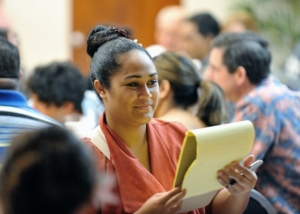Current Developments in the Samoan Fishing Industry

Samoa is a small island that relies heavily on two main exports, coconut products and fish. Although the Samoan economy grew significantly from diverse agriculture products such as taro, its current focus shifted to fishing industry development. Since the majority of poor Samoans work within the fishing and agriculture industries, improving the fishing industry can help the livelihoods of poor Samoans. The Samoan government and the World Bank are seeing progress in the growing Samoan fishing industry. The poverty rate decreased from 26.9 percent in 2008 to 18.8 percent in 2013, in part due to investment in underappreciated industries, such as the fishing industry.
Current Aquaculture Status
The Strategy for Development of Samoa (SDS) views aquaculture as an important pre-requisite to effective fish farming. Since 2007, Tilapia culture in earthen ponds has been successful but there are several constraints to further development in the Samoan fishing industry. A lack of feeds, technology, skills and limited access to markets impedes faster development. Despite the low technology, aquaculture is viewed as a practical means of increasing fisheries production, providing an additional source of food to those in poverty and generating income to local communities.
Four Initiatives
The Minister of Agriculture and Fisheries, La’aulialemalietoa Leuatea Schmidt, created four main goals in 2017 to boost the fisheries sector. The four initiatives are Samoa’s Tuna Management and Development Plan 2017-2021, the revival of the Fish Aggregating Devices (F.A.Ds) Project, repair work on research vessel F.V. Ulimasao and delivery of 20 tablets to monitor deployed F.A.Ds. The 20 tablets are used to observe and assess the impact of the F.A.Ds on food security and the livelihoods of Samoans.
The F.V. Ulimasou research vessel was repaired through financial assistance from the World Bank. The vessel is used to train fishery personnel and test new technology and fishing gear. About 30 percent of exports derive from the fishing sector and over 90 percent of exported fish is tuna. For this reason, the minister targets the growing industry in order to further develop the economy and the Samoan fishing industry.
Assistance from the World Bank
Thousands of Samoan families and local producers plan to benefit from a $20 million grant from the World Bank. The Samoa Agriculture and Fisheries Productivity and Marketing Project was created in 2019 and will include construction and rehabilitation of infrastructure, such as cold storage at fish markets. Samoa is frequently affected by hurricanes and part of the grant is directed towards constructing disaster-resilient fishery buildings.
The grant will also help grow Samoa’s capacity to export fish and fish products. Hon. Lopao’o Natanielu Mua, Samoa’s Minister for Agriculture and Fisheries said, “We look forward to working with the World Bank to achieve our goal of increased food, improved nutrition and more secure incomes for Samoans.” At least 30 percent of matching grants will go towards female farmers and fishers.
Future Outlooks
The poverty rate has continually declined thanks to efforts by the Samoan government, the Asian Development Bank (ADB), the World Bank and various organizations. The Asian Development Bank supported Samoa since 1966 and committed $190 million in loans, $134 million in grants and $33 million in technical assistance in the small island country. ADB’s future assistance to Samoa will focus on energy investment, disaster-resilient roads, upgraded port facilities and job creation. With continued efforts from external organizations, the livelihood of Samoans will improve.
– Lucas Schmidt
Photo: Flickr
